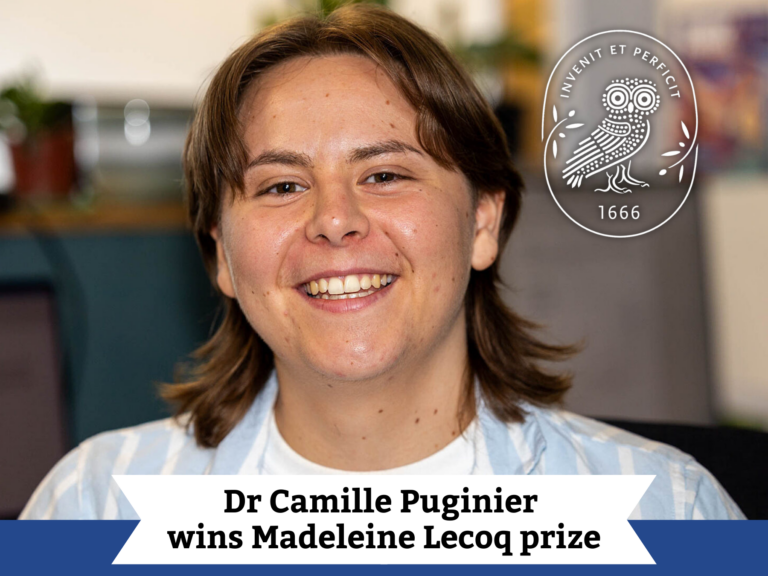Bacteria pathogen caught slicing up immunity regulator NAD+
Pathogens manipulate the NAD+ regulation in the host to increase infection
An intriguing discovery has been made by postdoctoral scientist, Michelle Hulin, in the fast-evolving field of NAD+ (nicotinamide adenine dinucleotide) metabolism in plant immunity. This represents an exciting new direction in Professor Wenbo Ma’s research group as the project was borne out her lab’s move to The Sainsbury Laboratory in Fall 2020.

NAD+ is a metabolite that is involved in many different cellular processes. Recent research has shown that NAD+ plays a central role in immune signalling across biological kingdoms. The signalling pathway entails specific receptor proteins that detect the presence of pathogens and subsequently cleave NAD+ into diverse products that activate immune signalling.
Whilst the role of NAD+ in plant and bacterial immunity has gained significant attention in the last four to five years, little is known about how pathogens might target this to overcome immunity. Professor Wenbo Ma’s group has a long-term interest in understanding virulence mechanisms of pathogens. She became curious as to whether pathogens would have evolved mechanisms to manipulate NAD+ metabolism during infection to promote disease.
Group leaders at The Sainsbury Laboratory are provided with core funding, which offers scientists the freedom to explore new research areas. When Wenbo moved her lab from the University of California Riverside to The Sainsbury Laboratory in 2020, she used the opportunity to diversify her lab’s portfolio. Using her core funding, Wenbo explored this fascinating question with postdoc Michelle Hulin.

The first clue that led Wenbo and Michelle to suspect the potential influence pathogens may have on NAD+ metabolism was the evidence of certain effector proteins secreted by pathogens into plant cells that can cleave NAD+ through enzymatic NADase activity. As a result, the plant’s immune system might be suppressed by the depletion of NAD+ as well as the interference with immune signalling pathways by the small molecules produced by NAD+ cleavage.
By studying the sequences and structures of proteins found in the species complex of the globally important bacterial pathogen, Pseudomonas syringae, Michelle was able to identify effectors with potential NADase activity. The results of these searches showed that P. syringae encodes type III effectors with six of the seven enzymatic activities that can cleave NAD+. This revealed that the plant bacterial pathogen, P. syringae, likely manipulates NAD+ to help it infect plants.

During this investigation a novel NADase effector was found and characterised, named HopBY. Experiments showed that HopBY causes chlorosis and tissue collapse when delivered by the bacteria into plants, potentially through the depletion of NAD+ which can lead to cell death. HopBY has a protein domain which is structurally similar to ADP-ribose cyclase enzymes which are important in human metabolism and immunity. Interestingly, HopBY cleaves NAD+ and produces a significant amount of a cyclic ADP-ribose molecule in plants which has also been shown to be produced by plant immune receptors and proposed to be an immune signalling molecule. It is therefore unlikely that this particular cyclic ADP-ribose is responsible for activating immunity. Detailed characterization of the molecules produced from NAD+ cleavage by pathogen effectors and plant immune receptors to understand how they differ in suppressing or triggering immune signalling will be the focus of further investigation.

The findings of this study also suggest an interesting evolutionary pathway, raising questions about the origin and evolutionary history of this Type III effector. Michelle found that the NADase domain in HopBY is also present in putative Type VI effector, which are toxins used by bacteria when competing with other bacteria or eukaryotes. The incorporation of this NADase domain into bacterial effectors for different interspecies competitions using distinct secretion system machinery demonstrates the importance of NAD+ manipulation in antagonistic interactions.By broadening our understanding of how pathogens manipulate NAD+ metabolism in plants to promote virulence, this research provides new insights into the signalling process and regulatory mechanisms in plant immunity, as well as animal and bacterial immunity. It represents an excellent example of how pathogen effectors can be used as molecular probes to dissect key events in host-pathogen interactions.

Building on the exciting discovery and excellent platform established by Michelle, Wenbo’s group has now expanded the scope of this line of research. A new PhD student Lena Knorr, who is supported by the NRPDTP program, has recently joined the team to continue studying fundamental aspects of NAD+ metabolism in plant-pathogen interactions.
Michelle Hulin says “I am delighted to see this project result in a publication after just over two years of work. Small molecule signalling in immunity is a rapidly developing research field which we are excited to contribute to. This project provided me the opportunity to learn and develop many techniques in the laboratory. I am eager to see where the research goes within the next six months.”
Wenbo Ma says “This research would not be possible without the outstanding support from TSL, especially the core funding and the support teams. We also benefit enormously from many discussions with other colleagues especially Jonathan Jones’ group as well as expertise and training from the JIC metabolomics platform. The role of NAD+ metabolism is an extremely exciting area with new results coming out every other week. We are happy that our research focusing on effectors can provide novel insight in this new frontier of plant disease.”


